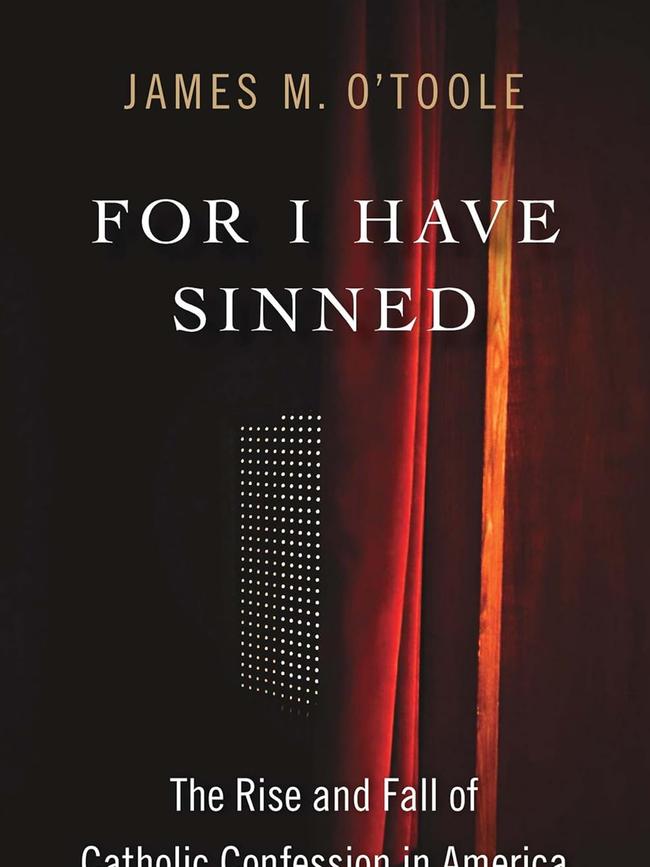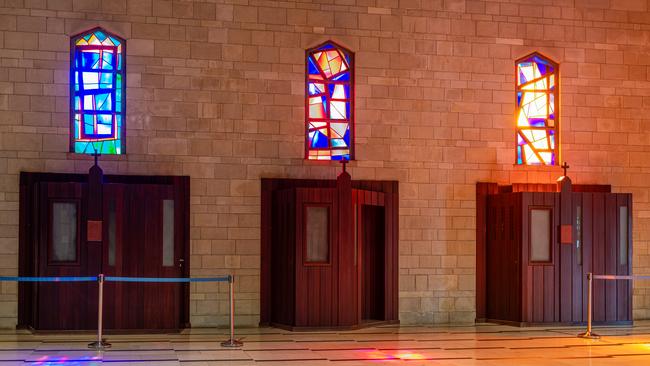When was your last confession?
Why confess if you intend to keep sinning? A new book weighs the arguments.

What I said to the priest at my last confession is none of your business. It also wasn’t that interesting, so you didn’t miss much. In the usual way of this Catholic sacrament, it started with an acknowledgment of sin and ended – for a believer like me – with God’s forgiveness.
James M. O’Toole, a professor emeritus of history at Boston College, calls this, amusingly, “not a bad exchange”.

Yet ever fewer Catholics accept this deal’s terms and conditions. My own participation in the rite has been spotty. Those of us who still go are “manifestly a minority”, O’Toole writes in For I Have Sinned, his thoughtful account of how a once common habit has declined “with a speed that may fairly be described as breathtaking”.
The book has a subtitle: the Rise and Fall of Catholic Confession in America, but it’s relevant for Australians too, many of whom will be visiting church for the first time this year, this Easter.
The roots of confession may be found in the Gospel of John, when Jesus literally breathes on to his disciples as he sends them out and tells them to forgive sins. In the early church, public confessions were routine. By the Middle Ages, the practice had evolved into private, individual encounters with priests. Protestants eventually abandoned the custom, but confession remains one of Catholicism’s seven sacraments, alongside baptism, confirmation, the Eucharist, matrimony, holy orders and the anointing of the sick.

Around the turn of the 20th century, O’Toole writes, “regular confession had taken hold as a defining characteristic of American Catholic religious life”. Churches generally don’t count confessions, so data are rare. O’Toole points to the priests at the Church of St Francis Xavier on West 16th Street in Manhattan.
For a 12-month period in the 1890s, 10 priests reported hearing a total of 173,394 confessions, which works out to about 333 confessions a week for each. Today, it’s nothing close to that. According to St Francis Xavier’s online schedule, priests are available to hear confessions for one hour on Saturday afternoons “or by appointment”.
A 2024 poll by Catholic media group EWTN (not cited by O’Toole) found that a small majority of today’s Catholics claim to go to confession at least once a year, though other surveys have suggested that participation is lower. “Seldom does history offer an example of a practice undertaken for so long by so many that collapsed so quickly,” O’Toole writes. Perhaps the real mystery is why it was ever popular. “For many Catholics, almost nothing about their religion was harder than going to confession, ” O’Toole observes. Confessing sins is uncomfortable, even though it often takes place in the anonymity of a closed booth with a screen that separates priests from penitents, who have the additional protection of a seal that forbids priests from discussing what they hear.

This secrecy is provocative and has driven the plots of thrillers, from anti-Catholic Gothic novels in the 19th century to I Confess, the 1953 movie directed by Alfred Hitchcock (who was Catholic), to police procedurals on television today. Politicians have sought to penetrate it with laws that demand priests reveal criminal confessions, particularly involving the abuse of children. In January, a committee of Montana’s legislature turned back an attempt to force priests to break their seals of confession.
O’Toole speculates that confession may have proved popular in the United States because it’s democratic: Everyone sins, and so everyone confesses, even the pope. It also contains elements of self-government. Before making a confession, Catholics are called to engage in an examination of conscience, prayerfully reflecting on their thoughts, words and actions.
Next comes what O’Toole describes as “a kind of courtroom drama”, in which a penitent plays the role of “accuser, prosecutor (and) witness” in his or her own trial, naming sins and expressing remorse for having offended God. The priest then acts as a judge who may offer words of wisdom or counsel but also pronounces a sentence. It’s rarely harsh and commonly involves saying prayers, reading a psalm or performing a work of charity. Then the priest imparts absolution – an undeserved gift of divine mercy.
Priests always have understood the paradox at the heart of this project: They want penitents to feel genuinely sorry and to desire to sin no more, but also to keep returning to confessionals, like satisfied customers. In the 1970s, following the reforms of Vatican II, the name of the sacrament was switched from “penance”, which has a pejorative flavour, to “reconciliation”, which is more welcoming and arguably more accurate.
This rebranding failed to inspire a revival of the practice, and O’Toole offers theories to explain why the sacrament continued to founder. One idea is that the frequent confession of venial sins had turned confession into a mechanical and unrewarding experience. Moreover, a typical mass includes a penitential prayer, which can sound a lot like a confession – and the shift away from incomprehensible Latin to vernacular languages may have made some churchgoers think it could substitute.
The biggest difficulty, O’Toole argues, was the rapid popular acceptance of what Catholic doctrine holds to be an intrinsic evil: artificial birth control. Some Catholics quit going to confession because they didn’t want to admit using contraception. Others saw the hypocrisy of confessing a sin that they had no intention of stopping. Many Catholics kept going to mass and receiving communion but dodged confession.
O’Toole is sceptical about the future of the sacrament: “Some people may miss the now lost world of full pews, dutiful parishioners and long lines at the confessionals, but lost worlds do not usually come back, no matter how idealised in memory.”
O’Toole closes his book with a vague call for “church leaders and theologians” to invent “a new form” of the sacrament.
Even in this moment of low popularity, however, the old way possesses a unique power. When I last partook of it, the priest offered helpful advice about a vexing problem. I left the confessional with feelings of relief, consolation and hope. I expect to go again.







To join the conversation, please log in. Don't have an account? Register
Join the conversation, you are commenting as Logout